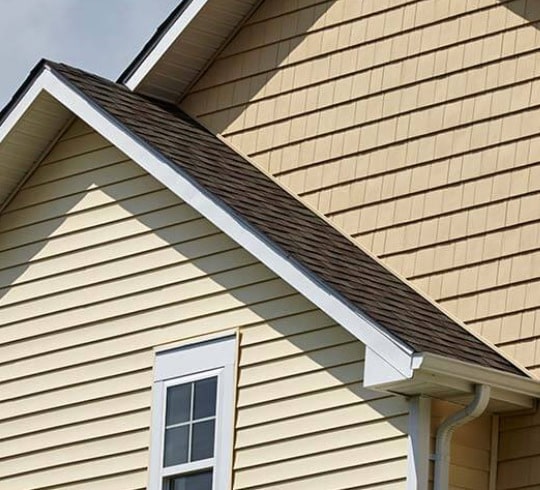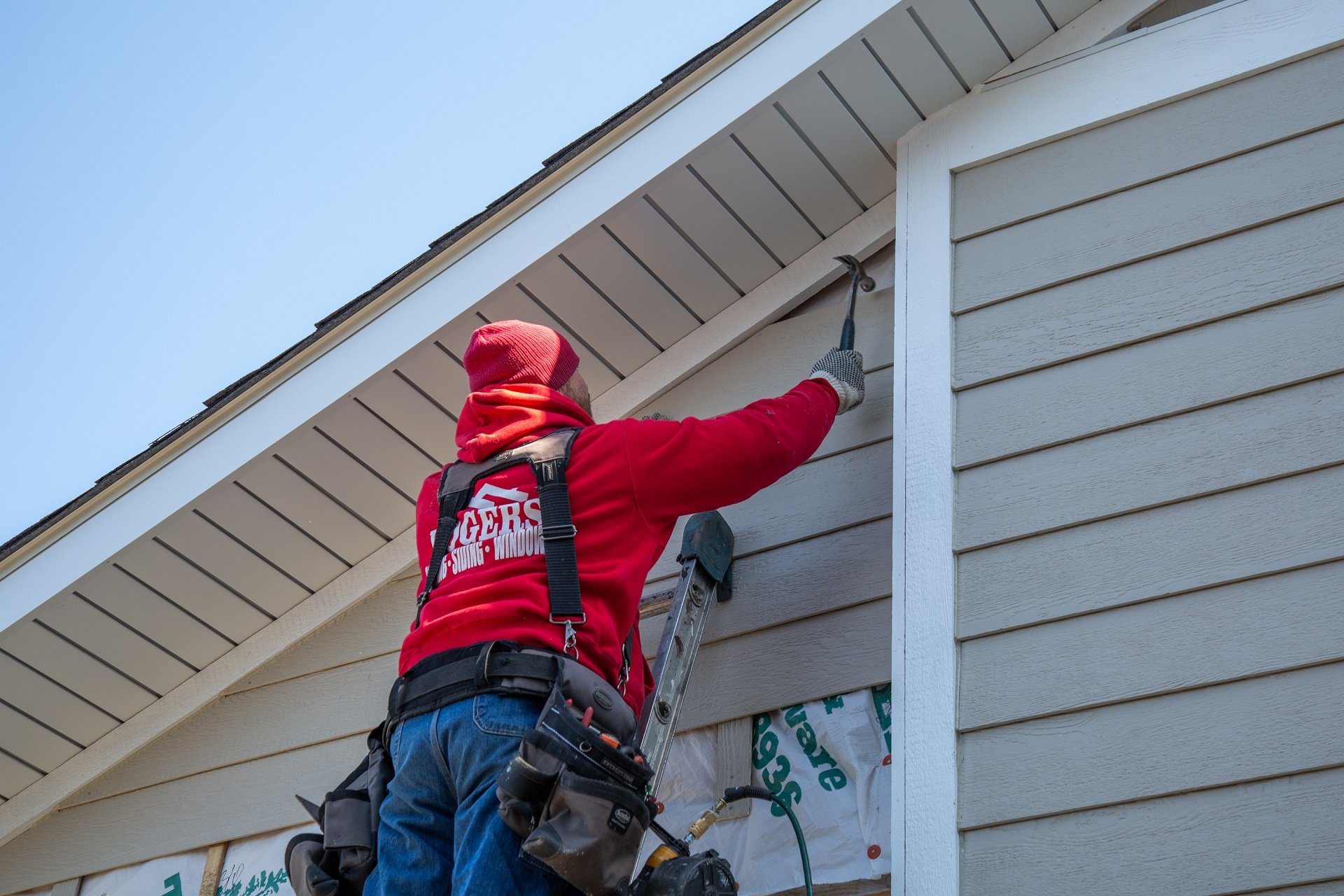Morris Siding Contractor Providing Energy-Efficient Home Exterior Installations
Morris Siding Contractor Providing Energy-Efficient Home Exterior Installations
Blog Article
The Crucial Guide to the Numerous Types of Home Siding and Their Unique Benefits
In the realm of home improvement, picking the appropriate siding is a crucial choice that influences both visual appeal and functional performance. With so several choices to take into consideration, which exterior siding product absolutely stands out for your details task?
Wood House Siding
Wood home siding, a prominent option for domestic exteriors, provides a classic visual that incorporates all-natural appeal with architectural integrity. This home siding material is readily available in numerous styles, including clapboard, roof shingles, and board-and-batten, allowing property owners to customize their façade to match their layout choices. Wood home siding is normally crafted from sturdy varieties such as cedar, redwood, or pine, which are recognized for their strength and capacity to withstand environmental stressors.
Among the primary benefits of timber siding is its excellent insulation buildings, which can add to energy efficiency and reduced heating expenses. In addition, wood siding is eco-friendly, making it an eco friendly option when sourced sustainably. Routine upkeep, including painting or discoloration, can lengthen its life-span and boost its look, allowing house owners to maintain the all-natural appeal of the wood.
However, possible disadvantages consist of vulnerability to parasites, rot, and weather damages, requiring ample therapy and maintenance - morris siding contractor. In spite of these issues, when properly taken care of, timber exterior siding can give a stunning and sturdy option that boosts the personality of a home while offering a warm, inviting atmosphere

Plastic Exterior Siding
Vinyl home siding has become a leading option for homeowners looking for a low-maintenance outside choice that combines longevity and cost. This functional material is crafted from polyvinyl chloride (PVC), making it immune to various weather, consisting of moisture and UV rays. Therefore, plastic home siding does not warp, rot, or discolor, guaranteeing lasting visual appeal.
One of the key benefits of plastic home siding is its substantial series of designs and colors, enabling home owners to accomplish the preferred seek their home without the demand for frequent repainting. Furthermore, plastic siding is easy to set up, which can dramatically reduce labor expenses throughout building and construction or renovation projects.
Vinyl home siding additionally adds to energy efficiency. Numerous choices attribute insulation support, which boosts thermal efficiency, aiding to preserve comfy interior temperatures and potentially lowering energy bills. Moreover, its smooth surface area facilitates easy cleaning, requiring only routine cleaning with a yard hose pipe to remove dirt and particles.
Fiber Cement House Siding
Fiber cement exterior siding has actually acquired grip among property owners and contractors alike due to its impressive combination of toughness and aesthetic adaptability. Composed of a mixture of sand, cellulose, and concrete fibers, this house siding alternative is crafted to stand up to extreme weather, including high winds, heavy rain, and temperature variations, making it a durable option for residential outsides.

Among the main advantages of fiber cement house siding is its resistance to insects, such as termites, and its non-combustible nature, offering boosted fire safety. morris siding contractor. In addition, it is offered in a wide variety of shades, structures, and designs, enabling home owners to achieve their preferred aesthetic without giving up efficiency
Another benefit is its low upkeep needs; fiber cement exterior siding normally requires painting or discoloration every 5-10 years, which is much less constant than other materials. Its long life adds to a reduced total cost of ownership, as it reduces the requirement for regular fixings or substitutes.
Inevitably, fiber concrete house siding stands for an excellent investment for those seeking a resilient, attractive, and versatile exterior option, combining both kind and feature to boost the home's aesthetic allure.
Steel Home Siding
The appeal of metal exterior siding hinges on its robust sturdiness and contemporary aesthetic appeal, making it a favored selection for modern find more design. Readily available in products such as light weight aluminum and steel, metal siding offers a variety of finishes and colors, allowing homeowners to attain a tailored appearance that complements their layout vision.

Energy effectiveness is another considerable advantage, as numerous steel house siding items are designed with insulation options that aid regulate interior temperature levels. This can result in lowered power costs over time. Additionally, metal siding is typically recyclable, making it an eco-friendly choice for sustainability-minded home owners.
The installment process for metal siding can be fairly uncomplicated, causing a quicker turn-around time for construction tasks. In general, steel siding combines capability and style, making it a sensible option for those seeking a long-lasting and visually attractive exterior Extra resources finish.
Brick and Stone House Siding
Block and stone go to my blog home siding stands out as an ageless selection that boosts the visual beauty of any kind of home. Understood for their sturdiness and low upkeep, these products supply a remarkable return on financial investment while raising the home's curb allure. Readily available in different shades, structures, and patterns, block and stone can be customized to fit diverse architectural designs, from traditional to contemporary.
Among the primary benefits of block and rock home siding is their energy effectiveness. Both products possess natural shielding homes that help regulate interior temperatures, potentially reducing heating & cooling costs. In addition, they use premium fire resistance compared to other house siding options, contributing to improved safety and security.
One more advantage is their durability. Block and stone can last for years, often needing marginal upkeep beyond occasional cleaning. Unlike wood exterior siding, they are unsusceptible parasites and rot, making certain a resilient outside that stands up to the aspects.
Final Thought
In summary, the selection of house siding substantially affects a home's visual charm, power efficiency, and maintenance needs. Each sort of exterior siding-- whether timber, vinyl, fiber metal, block, or concrete and stone-- offers one-of-a-kind advantages customized to numerous property owner preferences and environmental problems. Comprehending these choices makes it possible for educated choices that improve both the resilience and aesthetic charm of domestic exteriors. Eventually, selecting the best exterior siding is essential for achieving an equilibrium between performance and design in domestic design.
One of the primary benefits of wood exterior siding is its superb insulation homes, which can add to energy effectiveness and reduced heating prices. In addition, wood exterior siding is eco-friendly, making it an eco friendly option when sourced sustainably.One of the primary benefits of metal siding is its resistance to various environmental aspects.Power efficiency is one more significant advantage, as several metal siding products are made with insulation choices that help control indoor temperatures. Each kind of house siding-- whether timber, plastic, fiber cement, brick, or steel and stone-- provides distinct advantages tailored to numerous homeowner choices and ecological conditions.
Report this page